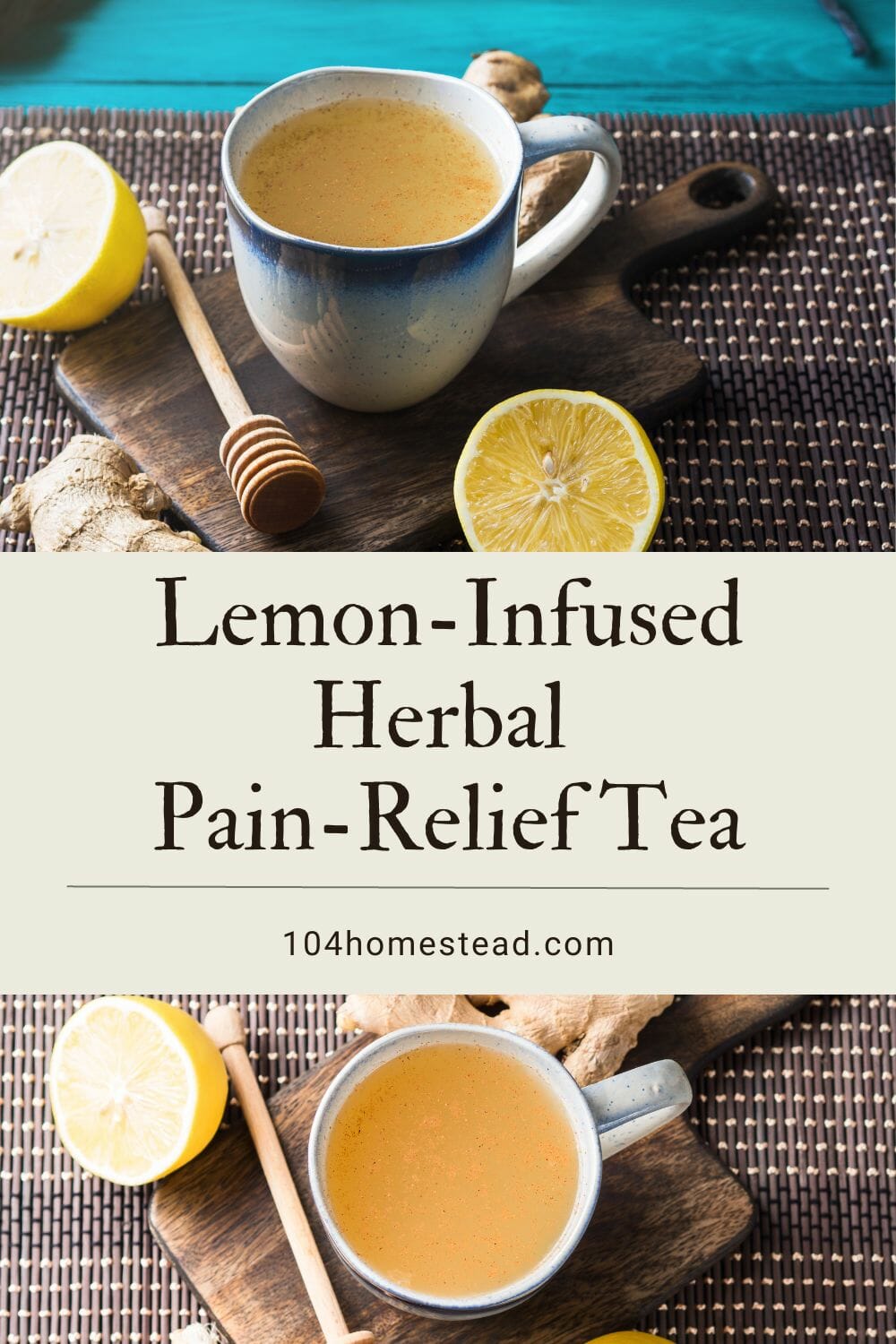Lemon-Infused Pain-Relieving Herbal Tea to Keep You Feeling Your Best
This scrumptious pain-relieving herbal tea helps to take the edge off while soothing achy bodies and acute pain naturally and effectively.
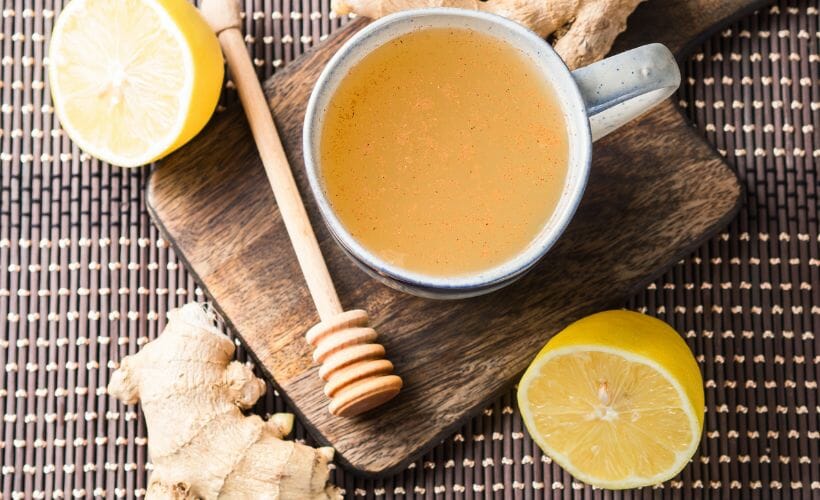
Pain is often an annoying and insufferable place to be in, especially when it interferes with your daily life. Constant back aches, joint and muscle pain that seem to increase when temperatures drop in the autumn and winter are the most common complaints.
Over-the-counter prescription drugs remain one of the most popular treatments for these types of pain. However, if you’re concerned about the possible side effects of pharmaceutical painkillers, you may choose to use an herbal remedy to manage pain and inflammation. Certain herbs are found to have anti-pain and anti-inflammatory properties.
The herbal below that are marked with an asterisk (*) are in our pain-relieving herbal tea blend. Eating foods that contain the following herbs may also assist in your pain relief.
Common Pain-Relieving Herbs
* Cayenne
Cayenne contains a resinous and pungent substance known as capsaicin. This chemical relieves pain and itching by depleting certain neurotransmitters from sensory nerves.
Clove
Clove contains the active ingredient eugenol, which is a natural anesthetic. It helps numb and reduce pain.
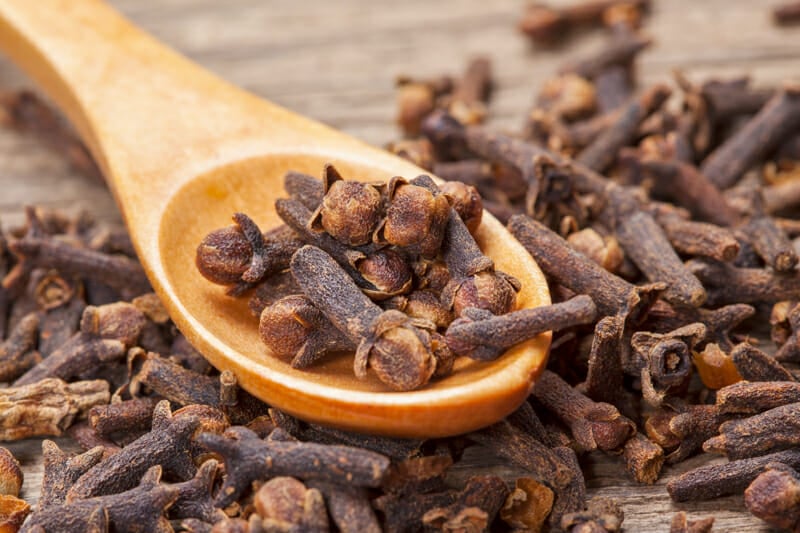
Eucalyptus
Research suggests that eucalyptus eases joint pain. In fact, many popular over-the-counter creams and ointments used to soothe pain from conditions like osteoarthritis and rheumatoid arthritis contain this herb.
Eucalyptus is also a common ingredient in vapor rubs, including this recipe for homemade vapor rub made with essential oils.
Feverfew
Feverfew is believed to have painkilling and anti-inflammatory properties. It’s been suggested that it reduces the release of an inflammatory substance, serotonin, from your blood cells and slows down the production of a chemical transmitter in your body called histamine.
Feverfew is paired with lemon balm in my herbal tincture for migraines. You can find the recipe for my tincture here.
* Ginger
Researchers in one 2010 study found that ginger was an effective pain reliever for human muscle pain resulting from an exercise-induced injury. Participants who ingested two grams of either raw ginger or heated ginger experienced reduced pain and inflammation. Heat-treated ginger was thought to have a stronger effect, but both types of ginger were found to be equally helpful.
Ginger is the star ingredient in my herbal cough syrup recipe because of its pain-relieving properties.
Lavender
Lavender’s powerful anti-inflammatory and analgesic properties make it a proven pain reliever, especially when it comes to easing joint and muscular pain and alleviating headaches and menstrual cramps.
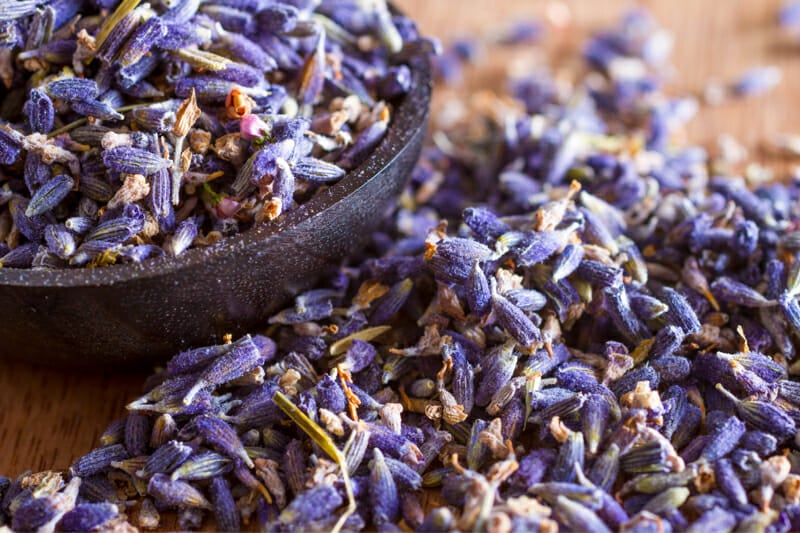
Peppermint
One 2016 study suggested topical peppermint oil can help alleviate pain and relax muscles. Menthol has a cooling sensation that may help ease tension or migraine headache pain when a person applies peppermint oil to the forehead or temples. It is possible that the aroma of peppermint tea may have a similar effect.
Rosemary
Rosemary oil is known in folk medicine as a pain reliever. Preliminary studies support its pain relief benefits and suggest it may be more effective than acetaminophen.
Turmeric
Taking turmeric extracts, alone or together with other herbal ingredients, can reduce pain and improve function in people with knee osteoarthritis. Turmeric might work as well as ibuprofen for reducing pain.
Common Anti-Inflammatory Herbs
Inflammation is the body’s way of fighting infections and healing. In some situations, inflammation can get out of hand and last longer than necessary.
* Black Pepper
Gillian Culbertson, a Registered Dietician from the Cleveland Clinic, stated recently, “At least one study showed that black pepper, when combined with turmeric and ginger, had anti-inflammatory effects on the same level as prescription medication for patients with knee osteoarthritis.”
Cardamom
The antioxidant compounds in cardamom may help protect cells from damage and slow down and prevent inflammation in your body.
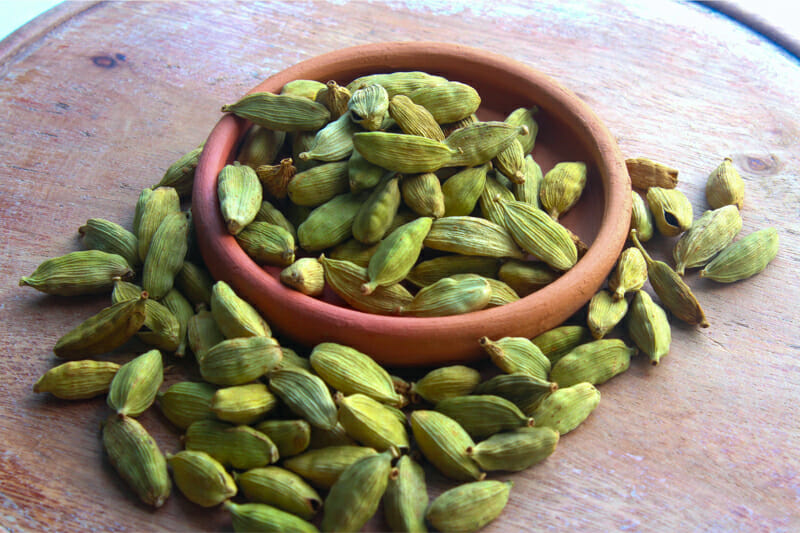
Cinnamon
The antioxidants in cinnamon have anti-inflammatory effects, which may help lower your risk of disease. Cinnamon and ginger give my elderberry syrup the punch it needs to fight off seasonal woes.
Garlic
Garlic contains diallyl disulfide, an anti-inflammatory compound that limits the effects of pro-inflammatory cytokines. Pro-inflammatory cytokines generally regulate growth, cell activation, differentiation, and homing of the immune cells to the sites of infection with the aim to control and eradicate intracellular pathogens, including viruses.
Garlic also cleans the sinuses and is included in my homemade fire cider recipe.
* Ginger
Ginger contains over 400 natural compounds, and some of these are anti-inflammatory. Both powdered ginger and fresh ginger contain the same health benefits. Ginger tea is perfect for flu relief as it settles the stomach and soothes sore muscles.
Ginseng
Ginseng has been shown to reduce the production of pro-inflammatory cytokines and, thus, improve the symptoms and the progression of inflammatory diseases.
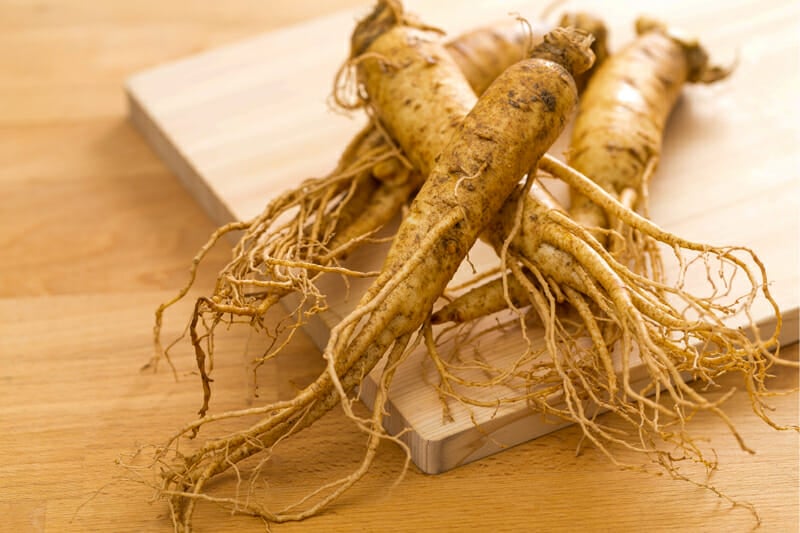
Rosemary
Rosemary’s antioxidant and anti-inflammatory activity is largely attributed to its polyphenolic compounds like rosmarinic acid and carnosic acid. Due to its antioxidant capability, rosmarinic acid is often used as a natural preservative to increase the shelf life of perishable foods.
* Turmeric
Turmeric has been used in India for thousands of years as a spice and medicinal herb. Recently, science has started to back up traditional claims that turmeric contains compounds with medicinal properties. These compounds are called curcuminoids. The most important one is curcumin. Curcumin is the main active ingredient in turmeric. It has powerful anti-inflammatory effects and is a very strong antioxidant.
Turmeric tea has a variety of health benefits. While research concerning the efficacy of turmeric is still ongoing, studies suggest that turmeric can help to reduce inflammation, soothe pain, improve mental focus, boost mood, and more.
How to Make Pain-Relieving Herbal Tea
Drinking tea blends made from botanicals that contain active ingredients for pain relief can help reduce the ache naturally.
If you’re not a fan of conventional medicine, here is a recipe you can make in your own kitchen to access the health benefits of plants and ease the pain in your joints, muscles, or back.
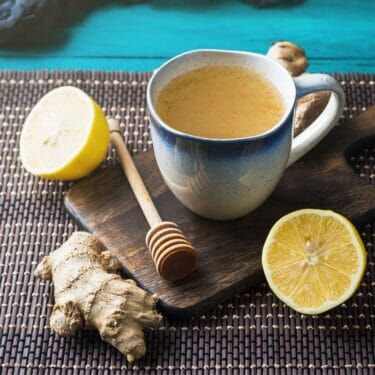
The Best Tea for Pain Relief
This post may contain paid links. If you make a purchase using the links in this recipe, I may earn a commission.
Equipment
Ingredients
- 5 c. Water
- 4 in. Ginger Root or 1 tbsp powdered ginger
- 4 tsp. Turmeric Powder
- ½ tsp. Ground Black Pepper
- ¼ tsp. Cayenne Pepper
- 1 Lemon
Instructions
- Cut the ginger root into 1" coins. Cut lemon in half.4 in. Ginger Root, 1 Lemon
- Pour water into a large saucepan. Squeeze the lemon halves into the water and add the lemon itself.5 c. Water
- Add the remaining ingredients to the mixture and warm over medium heat. Stir intermittently until it comes to a boil.4 tsp. Turmeric Powder, 1/2 tsp. Ground Black Pepper, 1/4 tsp. Cayenne Pepper
- Remove from heat, strain with a fine mesh strainer or cheesecloth, and enjoy.
Notes
Why Lemon is Added to Pain-Relieving Herbal Tea
In addition to enhancing the flavor of this tea, lemon is believed to be highly effective in preventing the build-up of uric acid, the human body’s waste product excreted in the urine. When uric acid is not expelled from the body as quickly as it should be, it can cause painful medical problems like gout, arthritis, and kidney inflammation. The citric acid in lemon and other citrus fruits is found to keep uric acid diluted.
Lemon is also a good source of vitamin C which helps strengthen the immune system.
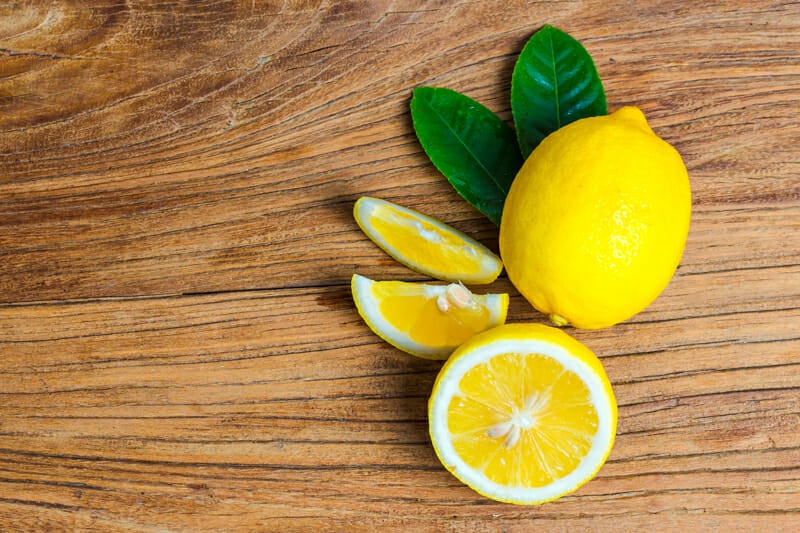
If you experience chronic pain, it’s important to remember that it is a complex issue to treat. While drug-free options work well for some, treating pain symptoms and underlying causes still depends on individual situations. It pays to adopt a holistic approach to healing, including a healthy diet, exercise, and a positive outlook. Consulting a physician is always recommended if you notice your symptoms worsening.
Not sure if tea is the right way to treat your discomfort? Find out how to choose between teas, tinctures, and capsules for your herbal treatments.
